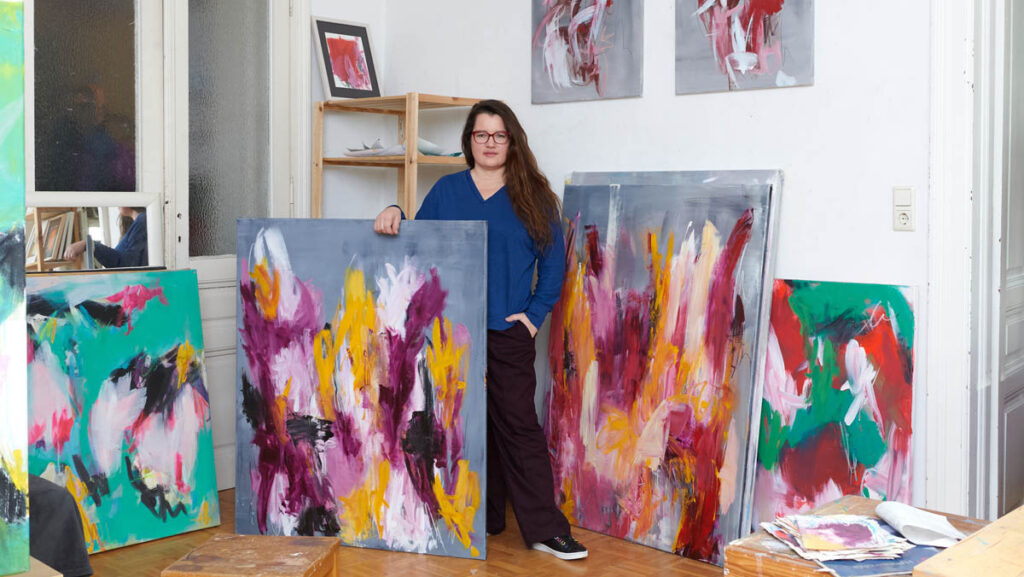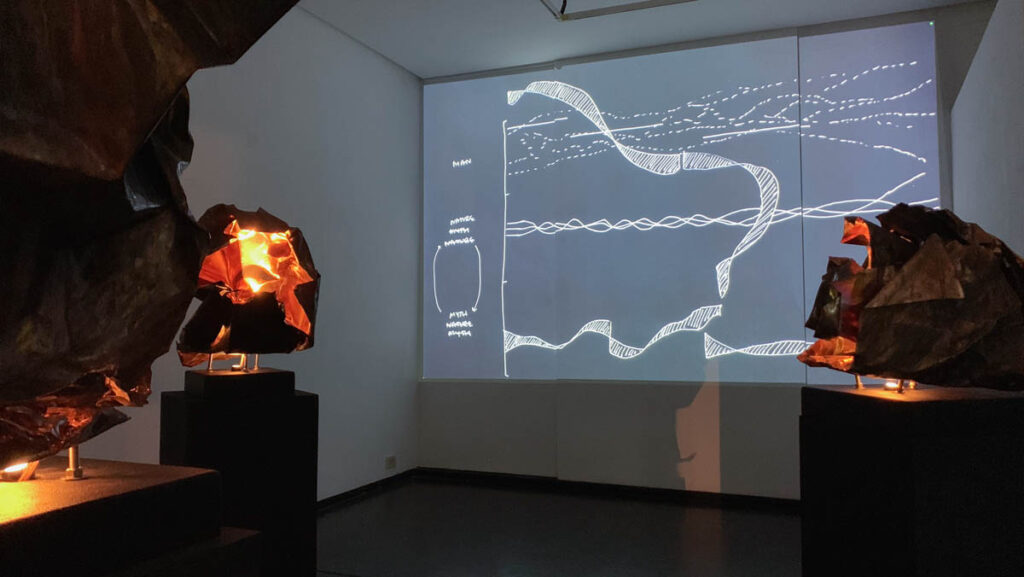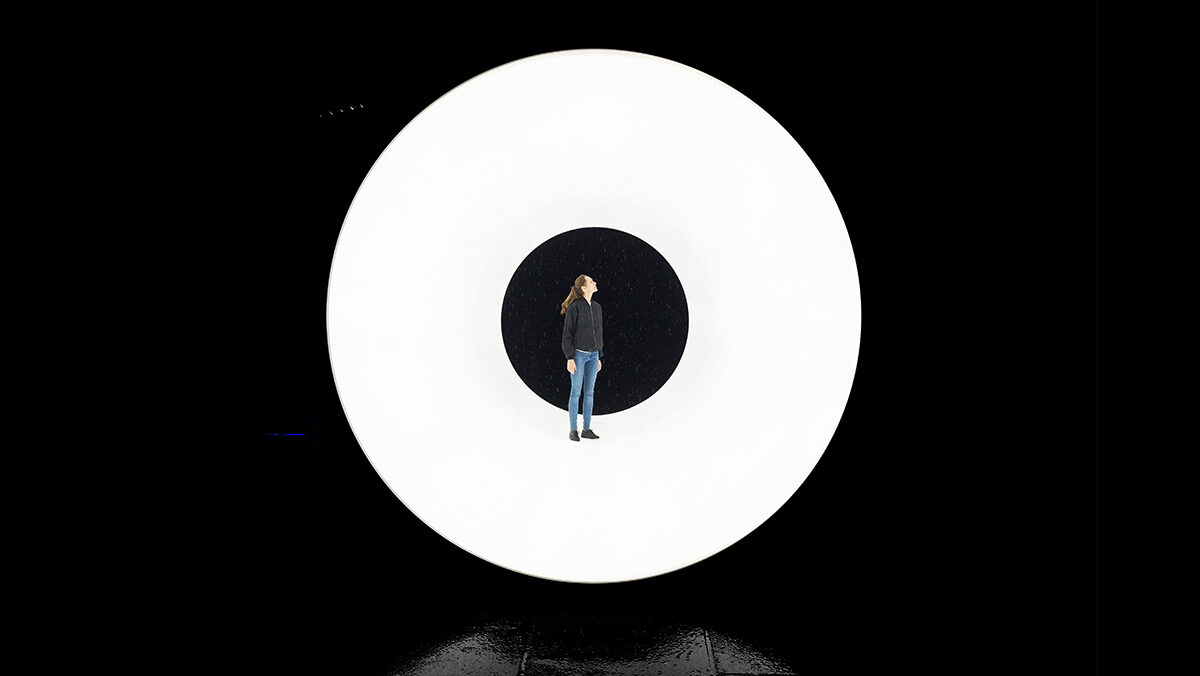
For years, the artist has used light as the primary medium for creating her experiential site-specific spaces which incorporate bold and striking visual, architectural, and sculptural elements. Terminal was inspired by the testimonies of near-death experiences (NDE) of persons who, after returning from unconsciousness, consistently report an interaction with light at the threshold of death.
This immersive installation, situated in front of the University Hospital Center “Mother Teresa”, is composed primarily of a single polyethylene cylinder of 6m by 3m diameter, illuminated from within by solar-powered LED neons. The landscape design by Elian Stefa and Dea Buza aims at creating a variety of moments of intimacy and pause. The light installation, placed as a crown jewel, invites viewers to immerse themselves in the transformative power of light, offering a glimpse into what might lie at the threshold of life.
Erka Shalari: In a past interview, you’ve mentioned the profound impact that Pink Floyd’s Pulse has had on you. You attributed the influence of the album’s cover, along with memories of your family in the somber atmosphere of Poland at that time, as the reasons for choosing light as your medium. Have you encountered any similar contexts with the same „gray“ ambiance during your travels, which might have inspired you to illuminate them?
Karolina Halatek: Seeing the lighting design of Pink Floyd’s stage in contrast to the grayness of early post-communist Poland was like seeing a sci-fi movie in real life, it was unbelievable! I couldn’t comprehend that I lived on the same planet, and parallel to my Polish existence, such events took place. However, my sensibility was shaped by the photographic practice of my father and grandfather. I grew up with a darkroom at home, and since I can remember, I was taken by my parents to slide shows and exhibitions, so light as a technical phenomenon was already surrounding me.
I collected those light experiences from my immediate surroundings, and through a long creative process I began transforming the environments of public spaces. I focus on the context of a particular site and personal experience, which means that my installations can happen anywhere where there is an openness to them.
You refer to a work of yours as „a morning when you take a flight“, another one as „when you reach the last meters of a mountain“, and another one as „a space that recalls a glacier crevice or a passage between skyscrapers„. Where do you find your inspiration?
As light is one of the most subtle representations of materiality, and it’s found in between the tangible and intangible, the reference to nature is evident – but nature is perfect on its own and doesn’t require reproduction – so my inspirations come mostly from the world of supernatural phenomena. Considering my faith as a Christian, I mostly focus on religious experiences, the inner light, or the light seen in spiritual visions.
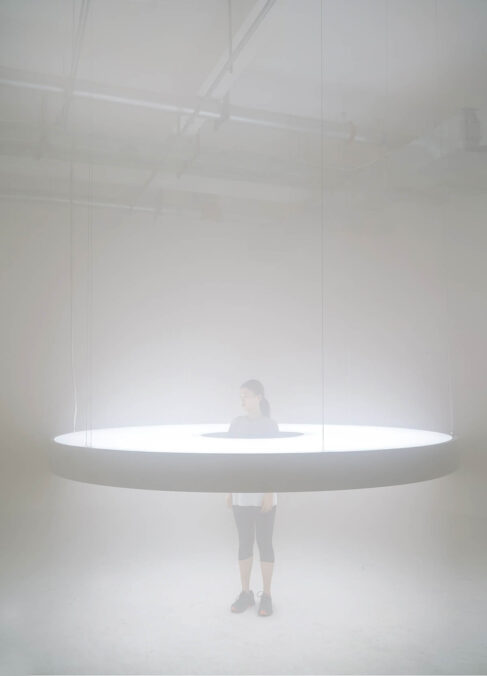
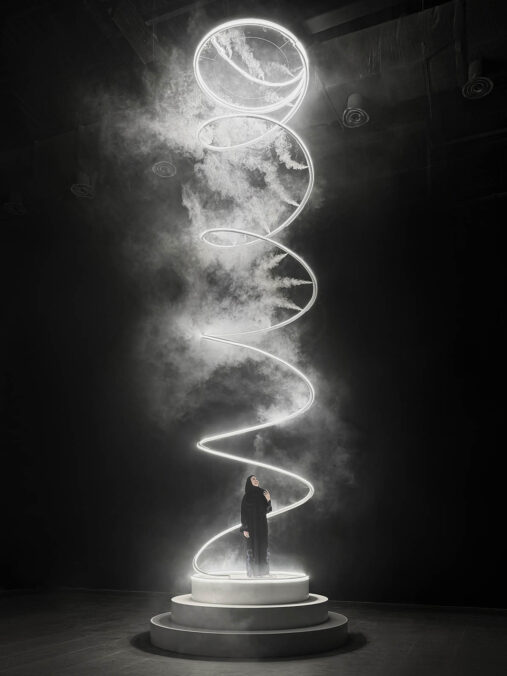
I sense that building on your main theme of light, the audience also plays an important role in your work. In your piece titled ‚Relic‘, climbing the stairs gives one a sense of empowerment, whereas in ‚Cloud Square‘, the audience is transported to a sky-like experience, allowing them to forget about the outside world. What do you think is the best part of creating artwork that feels open and accessible?
Inclusivity, enhanced sense of presence, engaging stillness, shifted perfection, discovery, serene excitement and connectedness. All those sensations can be evoked by immersive light installations, seeing people’s reactions and interactions with the work is the nicest feedback.
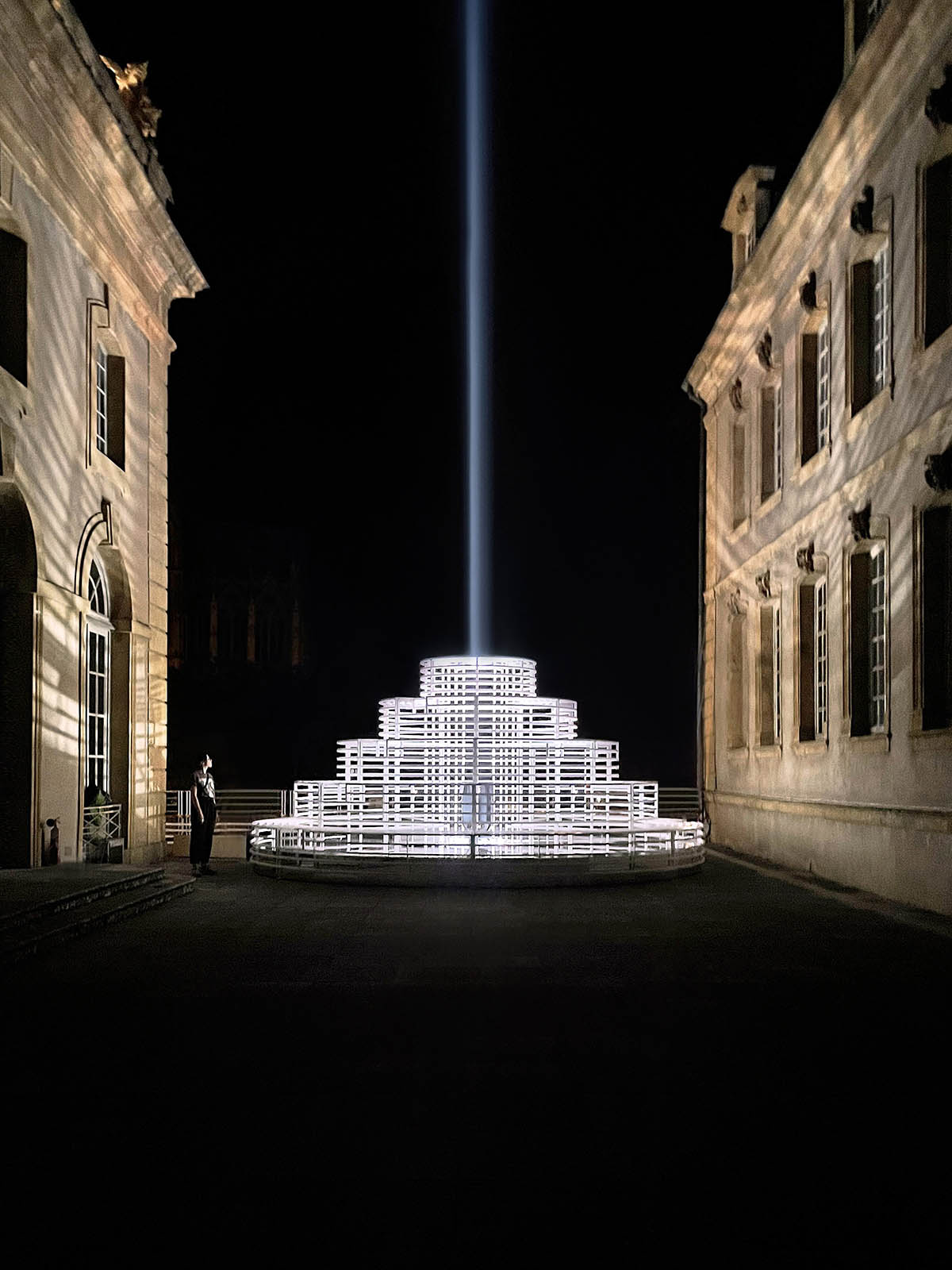
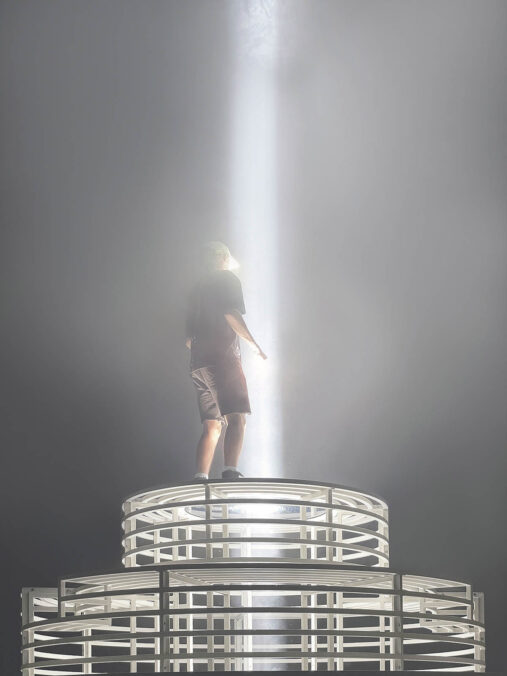
I wonder how your drafts and prototypes evolve?
I always start with a hand drawing, then I follow with a more precise technical drawing with the assistance of specialized software, and eventually, I discuss the project with a technician and exhibition producer. I often collect material samples to better communicate my vision, and if needed I do a scale model. I’m trying to do the drawings in notebooks, but often I think about ideas during my travels, and then sometimes my sketches can end up on a random piece of paper or even a napkin.
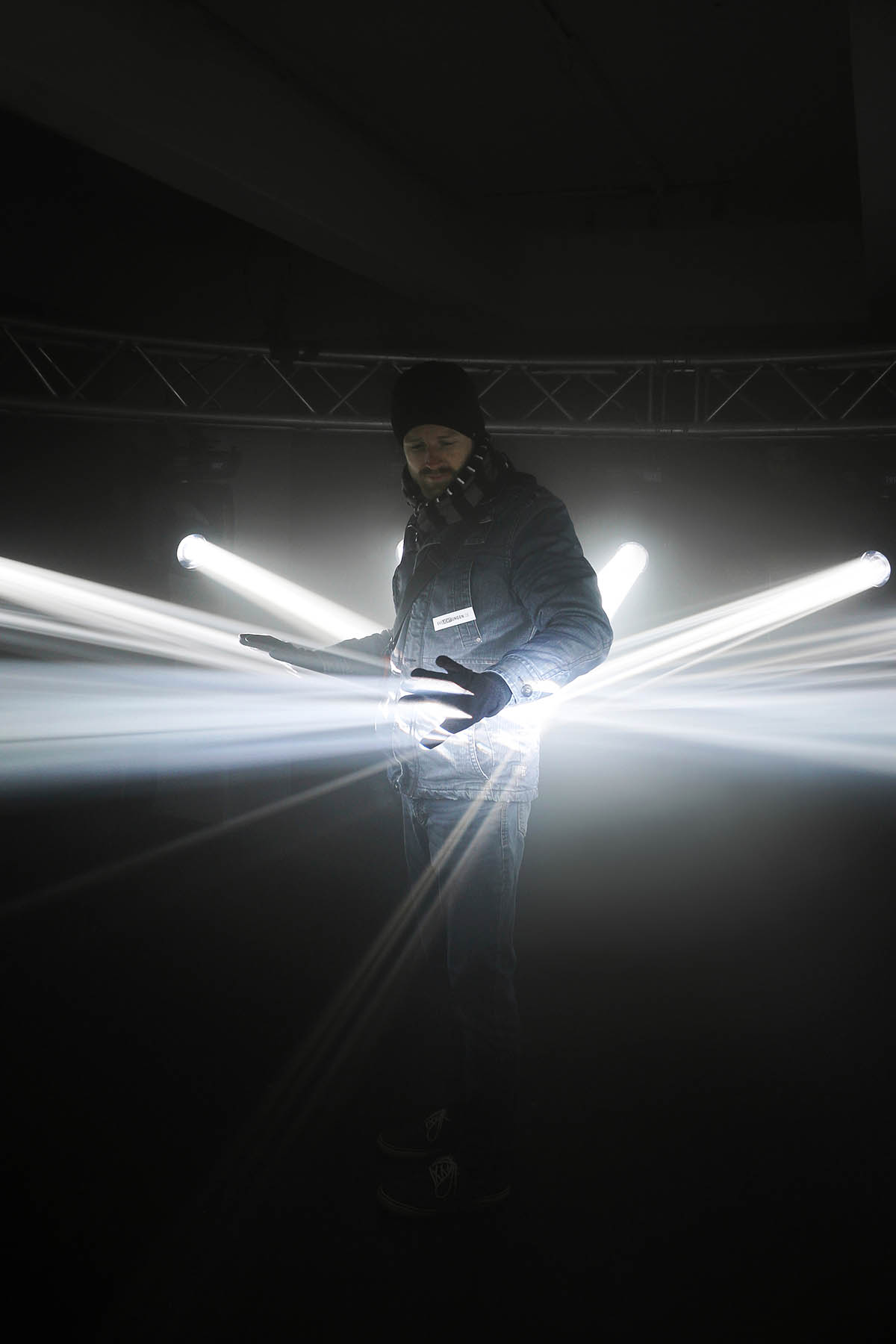
Where is your atelier?
In my head.
It is very impressive how Ian McCormack’s near-death experience influenced and inspired you to embark on such a profound and challenging journey. Could you share more about your encounter with his story?
I’ve always enjoyed hearing stories of profound transformations, testimonies of deliverance, and overcoming great challenges. One day during a regular YouTube surfing session, I came across his Near-Death Experience testimony, and I was astonished by its depth and existential significance. I realized that there are plenty of people from all around the world who have had such experiences.
Ian MaCormack’s interview was particularly fascinating to me, as his story was miraculous and beautiful in many extra-sensorial and spiritual ways. His whole being had gone through a tremendous transformation. After seeing hundreds of such testimonies, reading books and using online resources – such as the biggest online NDE database at Near-Death Experience Research Foundation – I started to take notes of the patterns that I saw and to map the similarities in these experiences. This process led me to create classifications and learn about the most characteristic aspects of NDEs. This research paved the way for my artistic decisions and led me to the final design of Terminal.
The debut of „Terminal“ took place at the Ascent Light Festival in Gerlingen in 2016. Due to great interest from the public, the exhibition was extended significantly. Can you share some of the comments or feedback that have particularly resonated with you?
A few people have given me feedback that they felt younger after crossing Terminal. I shouldn’t be surprised as white light is energizing, and the amount of lumens concentrated inside the work has an antidepressant effect. To be precise the work was prolonged twice in Gerlingen, which was completely unplanned, but the same thing also happened when exhibited in front of Kunsthalle in Bremen in 2018. People were enthusiastic about the work and the exhibition period was prolonged by three months.
Are people sometimes hesitant to experience Terminal?
Some people can feel disoriented. The intensity of light inside creates a big contrast, so the outside world gets darkened. Generally, the majority of people immediately want to enter the tunnel, but still, the work offers freedom to choose, it can be treated as a light sculpture or as an interactive installation.
How does it feel to have Terminal materialized for a second time now in Tirana? Have you been the very first one entering the work?
Seeing Terminal in Tirana is like traveling in time. It’s been 7 years since the first Terminal was produced, and I feel like the work is timeless, in that sense, it really reflects the eternal quality of NDE and being outside of time. As we were installing the work in the team I don’t remember who entered first – possibly the curator Adela Demetja, but it doesn’t matter who entered first, what matters is that this work is made by a group effort and that it serves both an individual and a collective purpose.
Seeing Terminal in Tirana is like traveling in time. It’s been 7 years since the first Terminal was produced, and I feel like the work is timeless, in that sense, it really reflects the eternal quality of NDE and being outside of time.
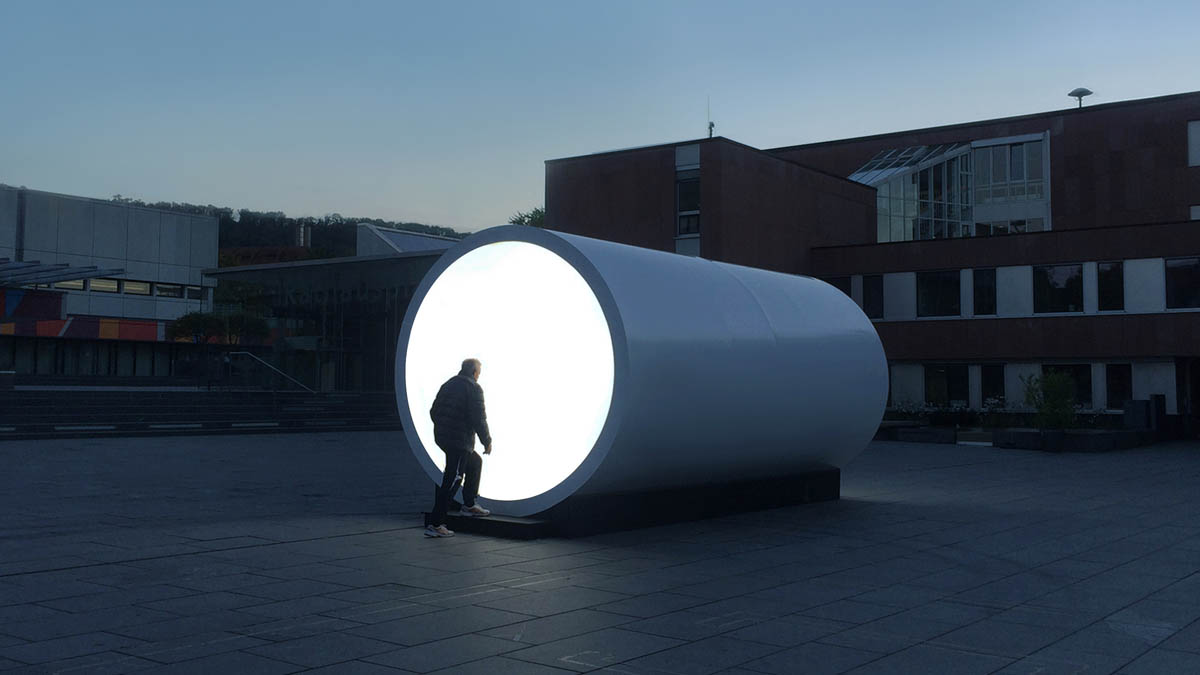
Have you ever considered the idea that the work would one day be at the entrance of a hospital?
Once I got an inquiry from a lady who worked at a hospice in Australia. She wanted to organize an exhibition of light artworks for the patients, and I found this idea very touching. Now when Terminal is placed in front of the “Mother Teresa” Hospital, I feel privileged, as it can be addressed to the viewers who need hope and relief. Terminal signals a Memento Mori in a contemporary and approachable way – it addresses the idea that death could be a transition to the afterlife or the fact that patients can come back and that life is a journey.
What makes Terminal for Tirana different from its preview version?
Terminal for Tirana is different from the one in Gerlingen. It’s been designed as a permanent piece so it has a stronger construction, is made from different materials, and is more durable, heavier and more stable. The entrance is at a lower position, and it’s powered by solar panels. Formally it looks almost the same.
What kind of research do you undertake to understand a site?
Firstly I need to understand the character of the context, and analyze the site plan and measurements; if the work would be outdoors, then also the accessibility of the site and the lighting conditions. I have to know how the site looks at different times of the day, and how the sun operates in a particular location. To know the history of the site is always a plus, but each creative intervention rewrites the history.
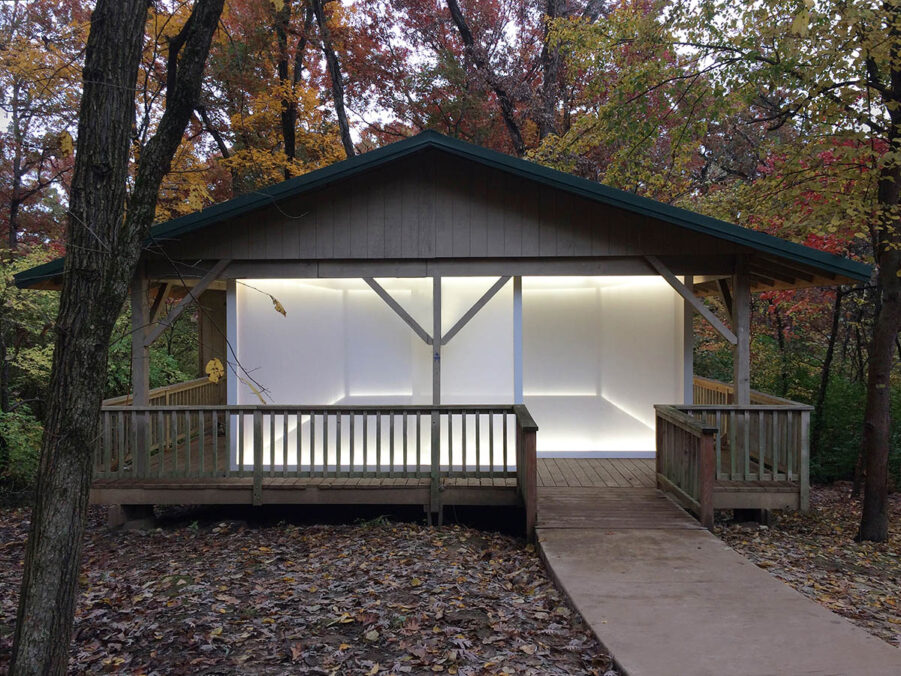
What do you enjoy in your leisure time?
My whole life circulates around art, so when I have free time I usually go to see exhibitions, meet my friends, have long conversations, or watch films. I enjoy cycling and time by the water, especially by the seaside. Sometimes I love to let the time pass without any particular activities.
Any other concrete plans for your stay in Tirana?
I’m eager to meet local creatives, possibly expand my NDE research and talk with Hospital practitioners. Tirana Art Lab will organize some talks and presentations in different art and architecture universities where I will present my work and project to the students. I want to learn about Albanian culture, take walks through the city and see Philippe Parreno’s artwork at the Centre for Openness and Dialogue.
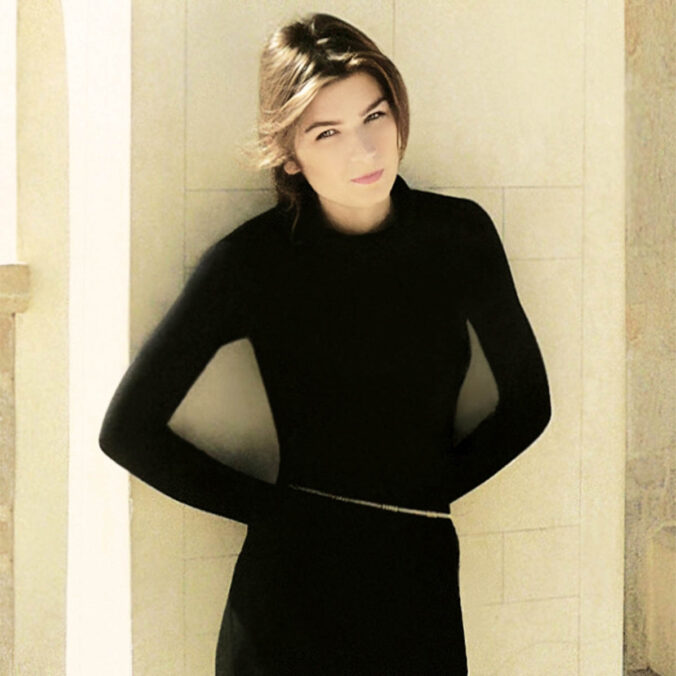
Karolina Halatek studied Design for Performance at the University of the Arts London, Great Britain, Fine Arts at the Universität der Künste Berlin, Germany and Media Art at the Academy of Fine Arts in Warsaw, Poland. During her studies in Berlin, she participated in workshops at the Institut für Raumexperimente run by Olafur Eliasson. Using light as the central medium in her work, Karolina Halatek creates experiential site-specific spaces that incorporate visual, architectural and sculptural elements. Seeing her work primarily as a catalyst for experience, Karolina creates installations that have immersive characteristics, often the result of collaborations with quantum physicists, founders of the superstring theory (Leonard Susskind, Roger Penrose, Carlo Rovelli) and precision mechanical engineers. Karolina is interested in experiences that extend to the edge of human knowledge, seeking a visual language to evoke feelings and emotions of virtually unknown phenomena – www.karolinahalatek.com, www.instagram.com/karolinahalatek
*Karolina Halatek will be in residency at TAL, preparing the inauguration of the work “Terminal for Tirana”. Residency is funded by the European Union, Goethe Institute.
Tirana Art Lab – Center for Contemporary Art was founded as a non-profit organization, on the initiative of Adela Demetja in 2010. TAL aims at promoting emerging artists and contemporary art from Albania as well as from Central, Eastern, and South Eastern Europe. The center is process and research-oriented. Through different events such as residencies, exhibitions, workshops, performances, lectures, and talks, as well as publications, TAL has managed to create a space for emergent critical and reflective thoughts. The center initiates and supports new productions by national and international artists, and projects critically engaged with artistic, cultural, and social issues of transitional and contemporary societies. – www.tiranaartlab.org, www.instagram.com/tiranaartlab.



